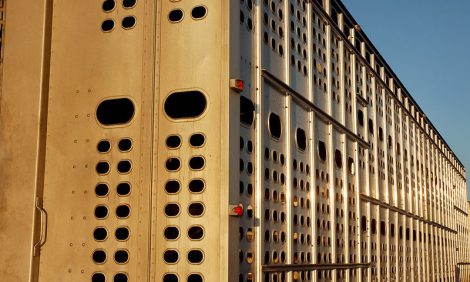



Dealing with Lameness and Mastitis
Lameness and mastitis are the two main reasons dairies in the United States lose cows, a South Dakota State University dairy scientist said.
SDSU Extension Dairy Specialist Alvaro Garcia said that according to the National Animal Health Monitoring System, lameness accounts for 20 per cent of cows lost to dairy farms, while mastitis accounts for 16.5 per cent. Insufficient bedding or poor quality bedding can make both problems worse.
“Culturing milk from the bulk tank should be considered a good monitoring tool for contagious bacteria and environmental mastitis exposure. It provides an estimate of the degree of infection present in a herd,” Garcia said.
However, although a good starting point and relatively inexpensive, culturing of milk from the bulk tank does not provide information about individual cows or infected quarters. High environmental counts in the bulk milk tank correlate with hygiene in the cows’ environment. Environmental bacteria, as the name implies, come from the cows’ environment — bedding, soil, manure, etc. — and those populations of bacteria are thus highly influenced by management practices.
“It is impossible to completely eliminate these bacteria, as they are endemic to where the animals live, and can only be controlled by improving cleanliness of both the cows and their surroundings,” Garcia said.
Research has shown that the time cows spend lying down is reduced as bedding decreases, Garcia noted. The opposite is also true, as filling the stalls up to the curb with either organic (i.e. straw, sawdust, compost) or inorganic (i.e. sand) bedding increases lying times by 2 or more hours per day.
“This means that plenty of bedding in stalls increases cow comfort. But past research has also shown that deep, comfortable bedding maintained higher moisture levels longer and was also replaced less often,” Garcia said. “When this happened there was an association with higher incidence of mastitis due to environmental organisms.”
Careful management is also needed to prevent lameness, Garcia said. When cows remain standing for prolonged periods of time, they bear weight longer on their feet and are thus more susceptible to hoof lesions.
“It is currently thought that the average cow needs at least 12 hours of resting time with high-performing animals benefiting from at least 14 hours,” Garcia said. “To evaluate if cows are comfortable, one can use the cow comfort index, or the proportion of cows lying down in the stalls. Whenever they are not eating or being milked, at least 85 percent of the cows should be lying down.”
The stall standing index is also important. It is the proportion of cows standing that are at least touching a stall (those perching or with just the two front feet in the stall are in this group). Less than 20 per cent of the cows should be in this category.
“The key then is for producers to reach an equilibrium by having enough bedding to optimize cow comfort, especially since adequate bedding is a factor in preventing lameness. Yet they need to replace bedding often to keep it dry and clean and minimize mastitis,” Garcia said.
Further Reading
| - | Find out more information on Mastitis by clicking here. |
February 2009


